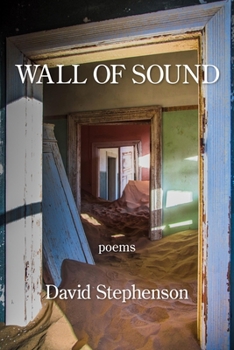Wall of Sound
Jean L. Kreiling
David Stephenson's Wall of Sound is rich and full, many-textured and multi-layered. Stephenson's detailed poems cover a wide range of subjects, with landscapes both urban (a freeway casino, a muffler shop, a Ramada Inn) and rural (the ditches and fields of his childhood, a rock quarry on his grandfather's farm). Stephenson also writes in the voices of others, both human (Spartacus, Merlin, a tomb-builder at Thebes) and non-human (a pet dog, a cavefish, a dairy cow), as well as the "in-between" monster of Frankenstein. The book contains more personal poems too, and the most moving ones include memories of his late father and brother. There are well-made sonnets here, rhyming quatrains and other forms, which give the book an overall music. But kudos to Stephenson for crafting his poems in a more relaxed formalism - iambic pentameter that's not metronomic, rhymes that often work quietly in the background. In these poems, meaning and substance are as important as form, making Wall of Sound an antidote for the indecipherable lines that inundate poetry today.
Elise Hempel
Related Subjects
Poetry




